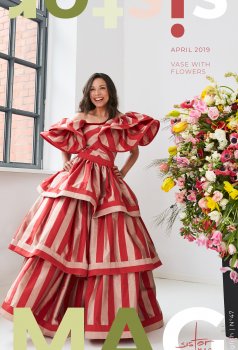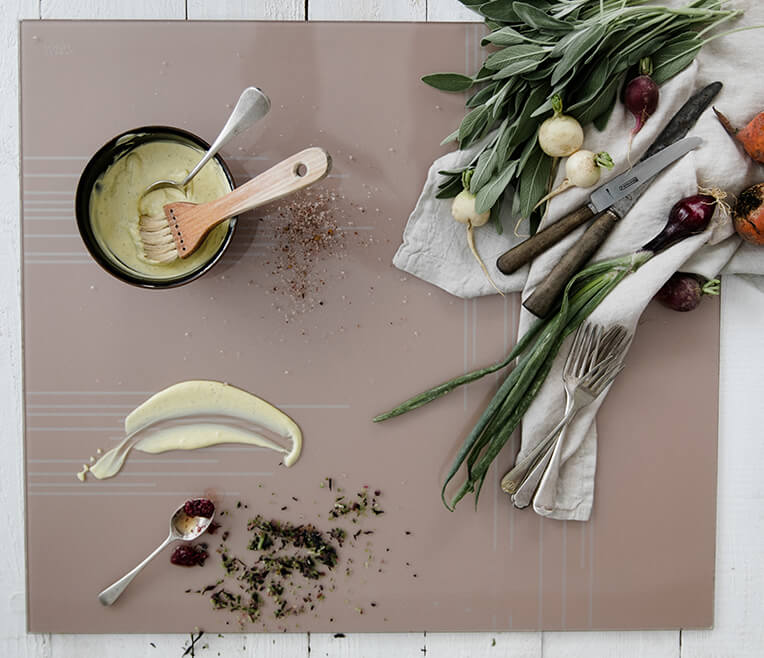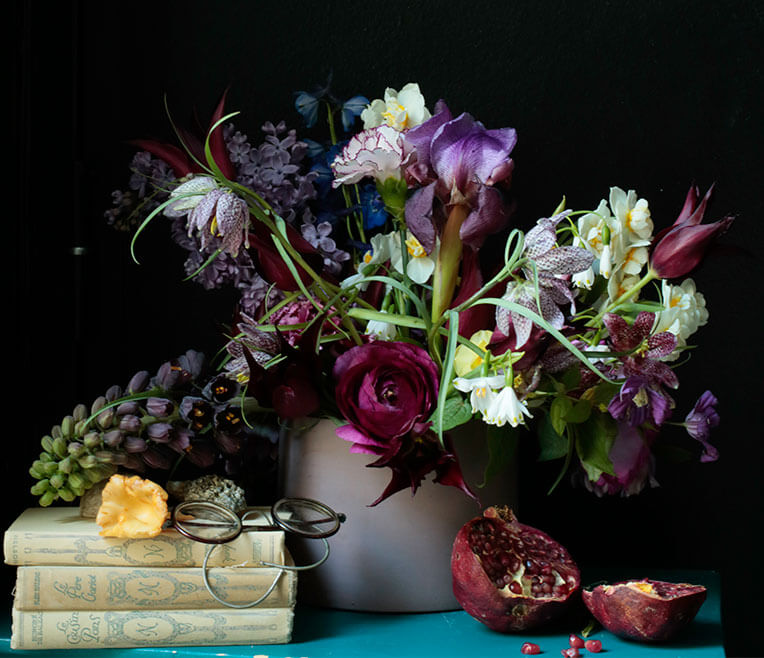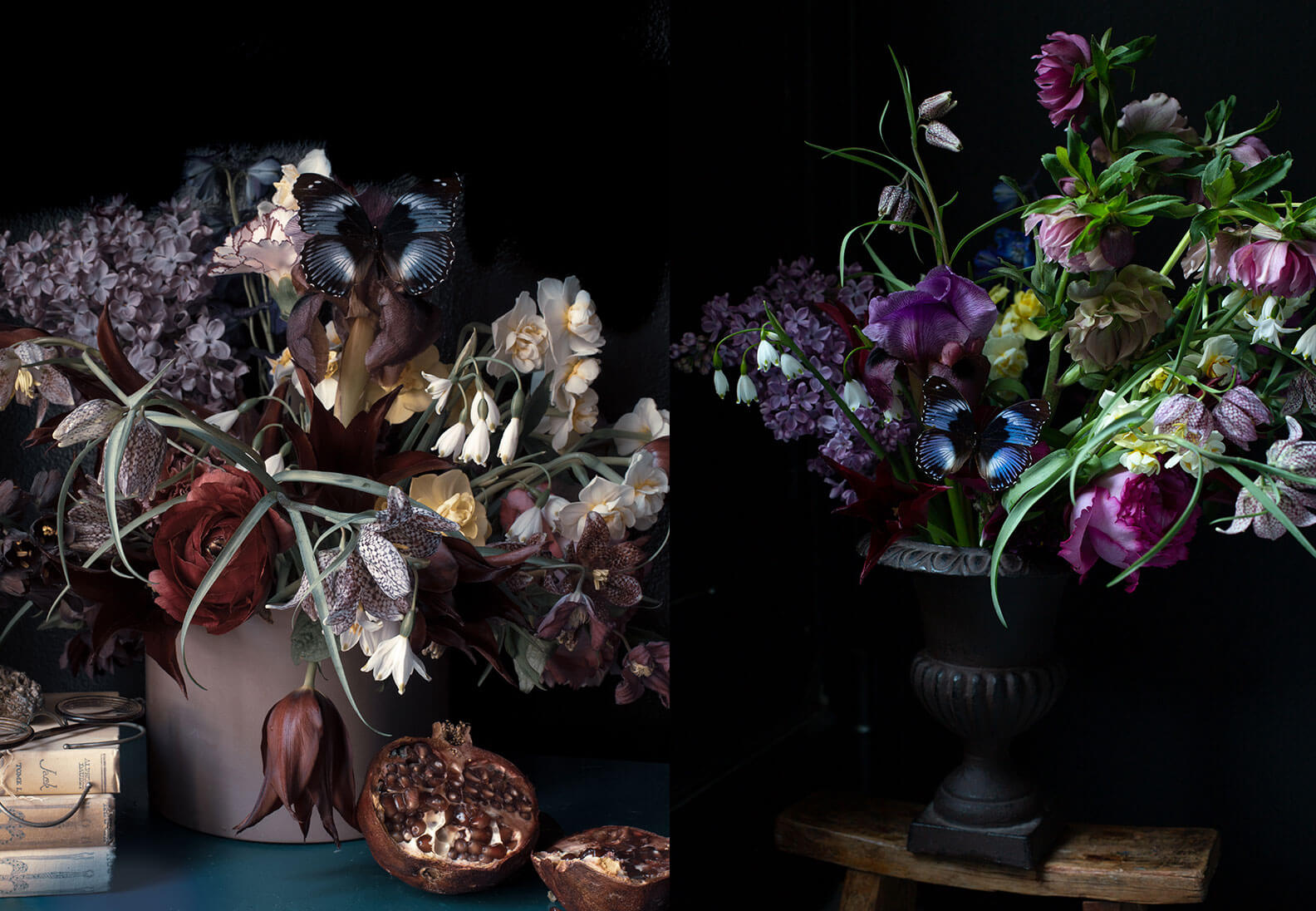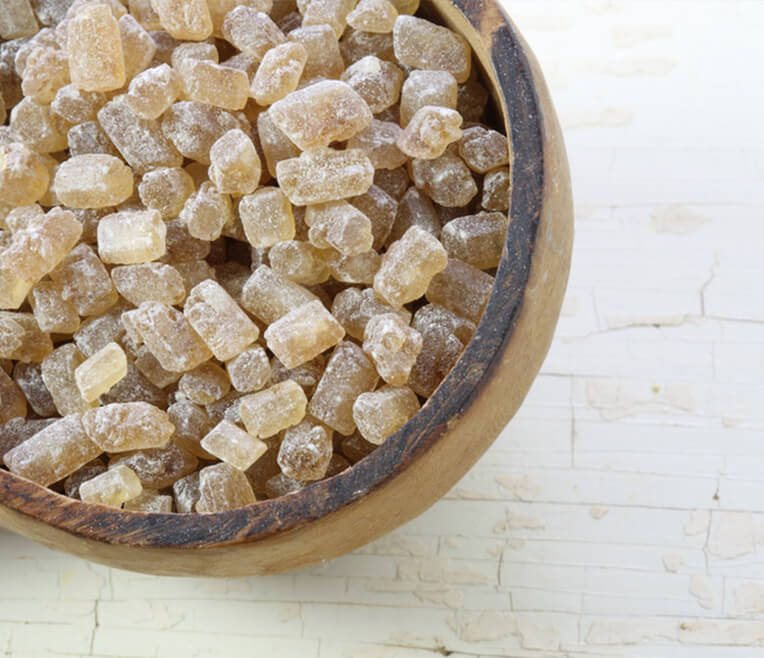
Tutorial: A modern take on flower still lives
Photographer, blogger and floral stylist Elodie Love shows you a modern take on flower still lives and how to capture them in this new issue of sisterMAG. She already proved her love for still life photography back in 2013 – click here to get to the feature in sisterMAG No. 6.
- Tutorial & Photography: Elodie Love
Tutorial
A modern take on flower still lives
A Still Life – or »nature morte« in French is a painting that features inanimate objects.
Flowers are a beloved subject for still life paintings and a lot of modern photographers are trying to reproduce the mood of the Dutch masters from the 16th Century and their chiaroscuro. This is no wonder as some people describe the art of photography as painting with light.
Bas Meeuws and Kevin Best for example are amongst the most famous still life photographers reinterpreting the art of Vanitas. A vanitas according to Wikipedia is a symbolic work of art showing the transience of life, the futility of pleasure, and the certainty of death, often contrasting symbols of wealth and symbols of ephemerality and death. Best-known are vanitas still lives a common genre in Netherlandish art of the 16th and 17th centuries.
If you are interested in modern Still Lives, you can check my Pinterest Board
For the Still Life in sisterMAG 47 I went on a stroll through Paris to some of my favourite flower shops. I found some of the flowers at a beautiful shop called FLOWER in Rue des Saint Père and the rest at UNE FLEUR EN LIBERTE in Rue Saint Sauveur, a shop run by a delightful German lady called Edith Besenfelder. To complete the bouquet, my friend Julie Pomme gave me some snowdrops and narcissus that are cultivated in a field in Paris.
I mostly used seasonal flowers, as it is the beginning of spring and the flower-shops are bursting with beautiful species. It is very different to what the floral painters in the 16th and 17th centuries used to do. For example, in Giovanni Garzoni’s painting you can see anemones, tulips and daffodils even if they don’t grow at the same time.
We always imagine that the artists back then made a bouquet, looked at it and then painted it, but this is probably not what happened. The created artworks are usually composed of flowers that could never have been together in a bouquet. The paintings were dreams in the mind of the painter and an idealized vision of the nature.
I tried to use as many different flowers as I was able to while staying in a purple, bluish colour palette, as one of the purposes of floral and botanical paintings in the 16th and 17th century was to show the diversity of species present in nature.
To complete my bouquet, I went on the hunt for a butterfly to make it a proper Still Life. In floral Still Life you very often see butterflies, insects or snails or like in Garzoni’s painting, sea shells.
I went to a beautiful Parisian taxidermist called Design et Nature on Rue d’Aboukir. I learned a lot about the animals in the shop. They all died from natural death and come from animal parks in Europe.
In addition to the butterfly, I put some other elements to the composition that add elements of storytelling such as the Dutch masters used to do. I used a pomegranate but it also could have been a lemon, figs, pears or quinces. Those fruits and other food ingredients were usually present in Still Life paintings.
I made bouquets in two different vases. The medicis vase or medici vase is a very classic one that originates back to the 1st century and was used in Athens as a garden ornament.
This one is made out of iron and can also be used in gardens. It is hollow in the middle, so in order to use it you have to place a glass or a smaller vase in it and use a flower frog (also called Kenzan in Japan). This looks beautiful on a photo, but it is not very easy to realise at home as the vase is very heavy and the glass inside very small, so the flowers run out of water very quickly.
The second vase is a very modern pink one that I found at Soestrene Grene. It has a more modern take and I wanted to show that it is possible to make a still life in the style of the 16th century but give it a modern twist.
Please also have a look in Elodies original article on Still Life Photography in sisterMAG 6 and her interview with one of the most famous still life photographers Kevin Best.

